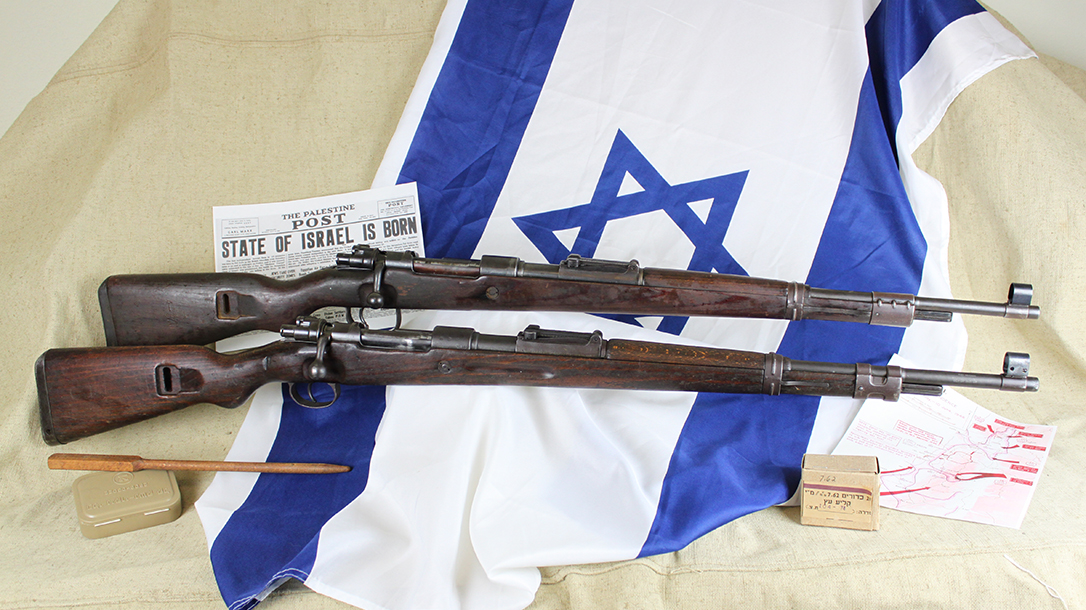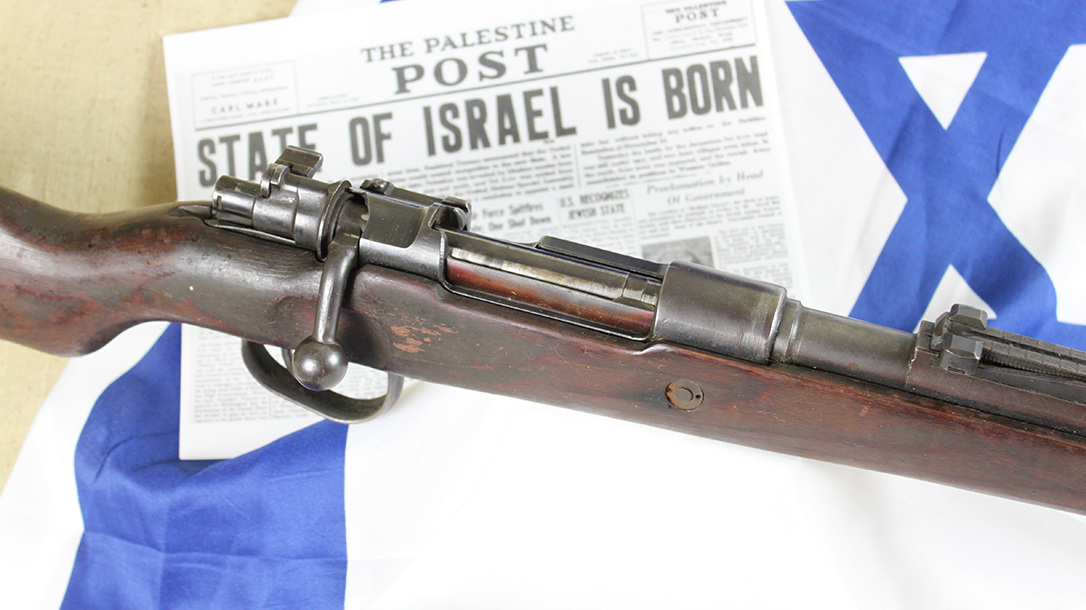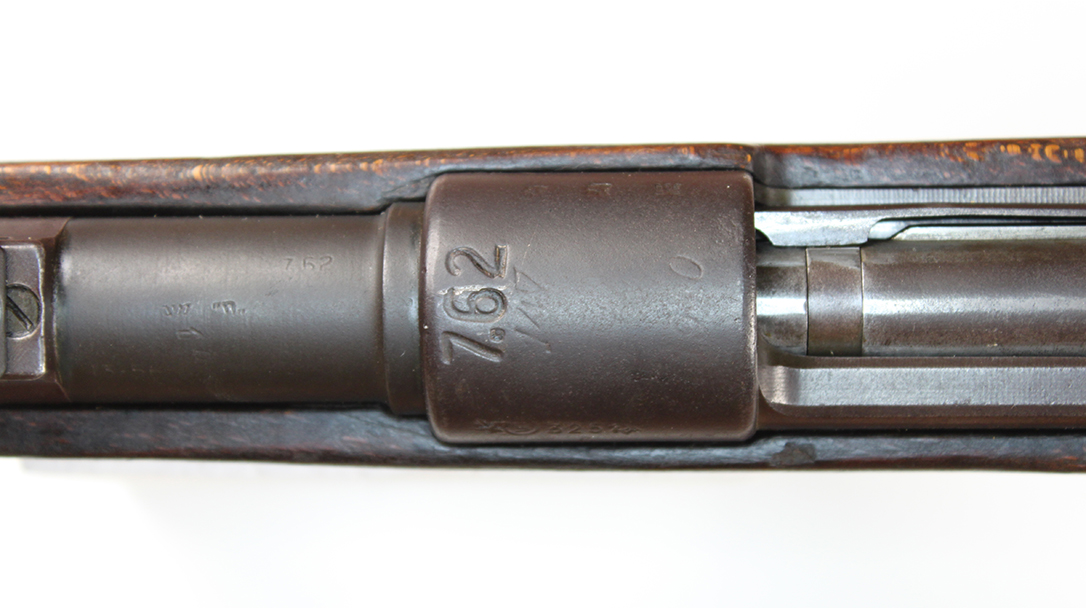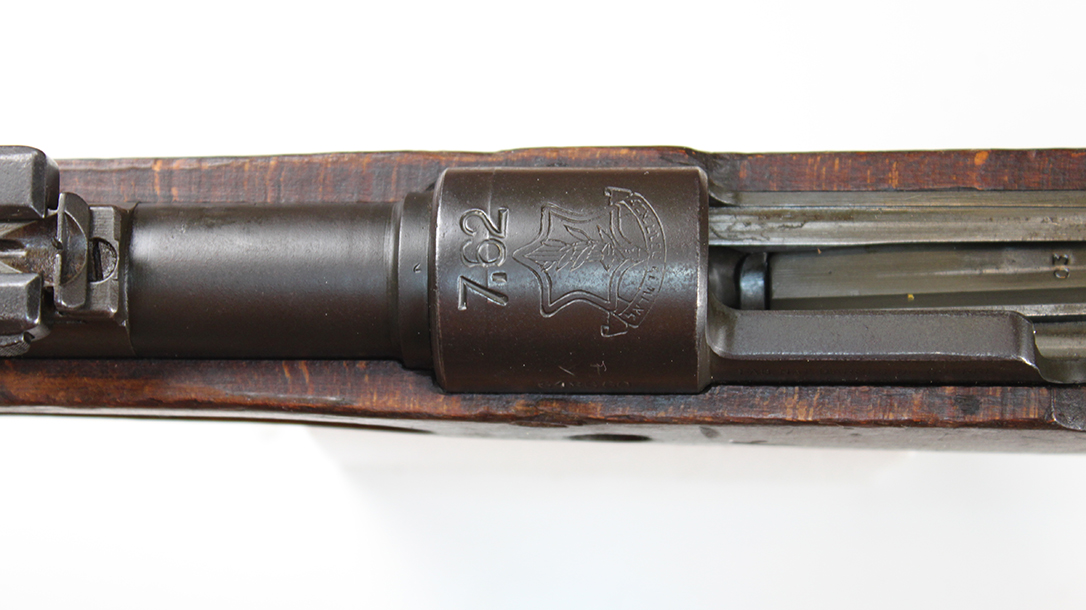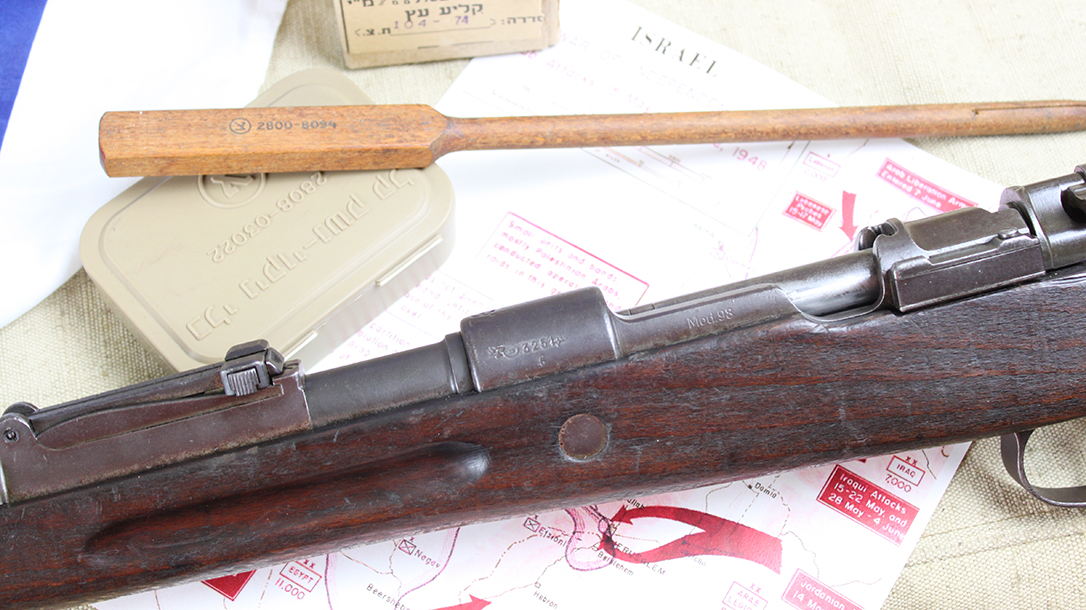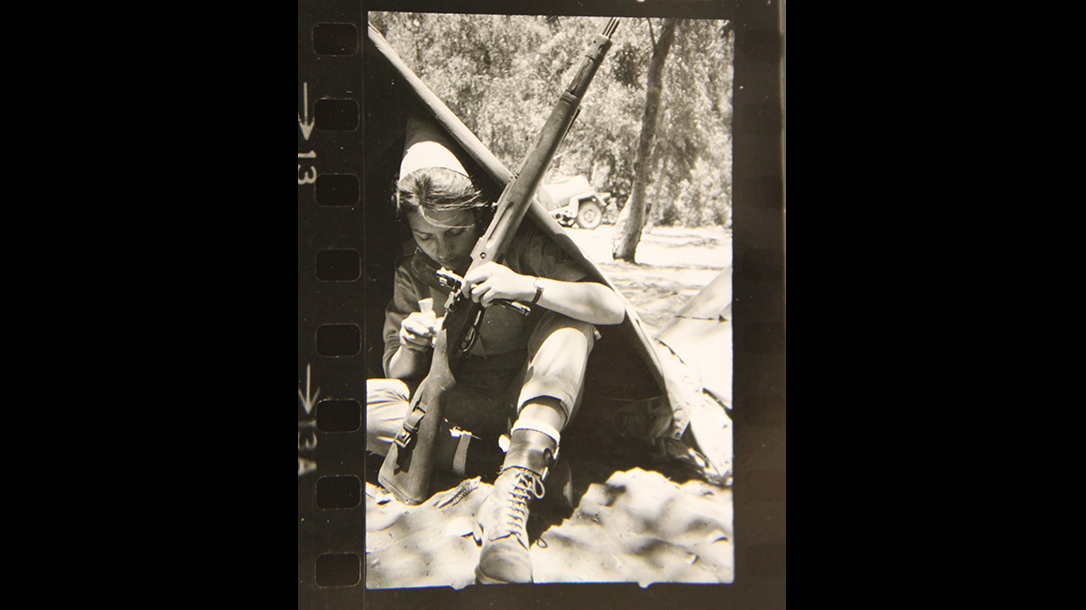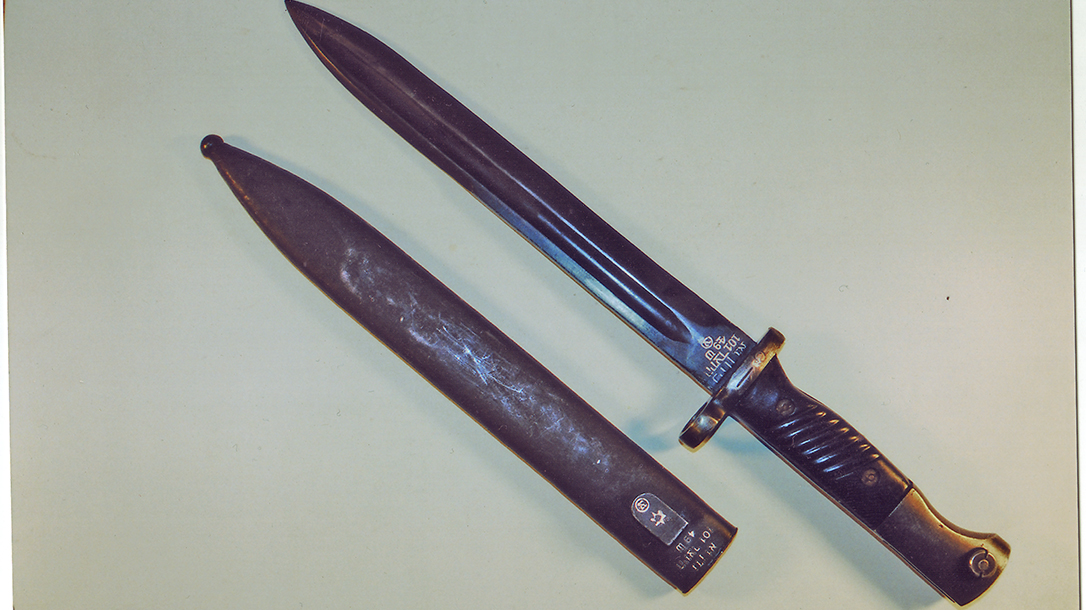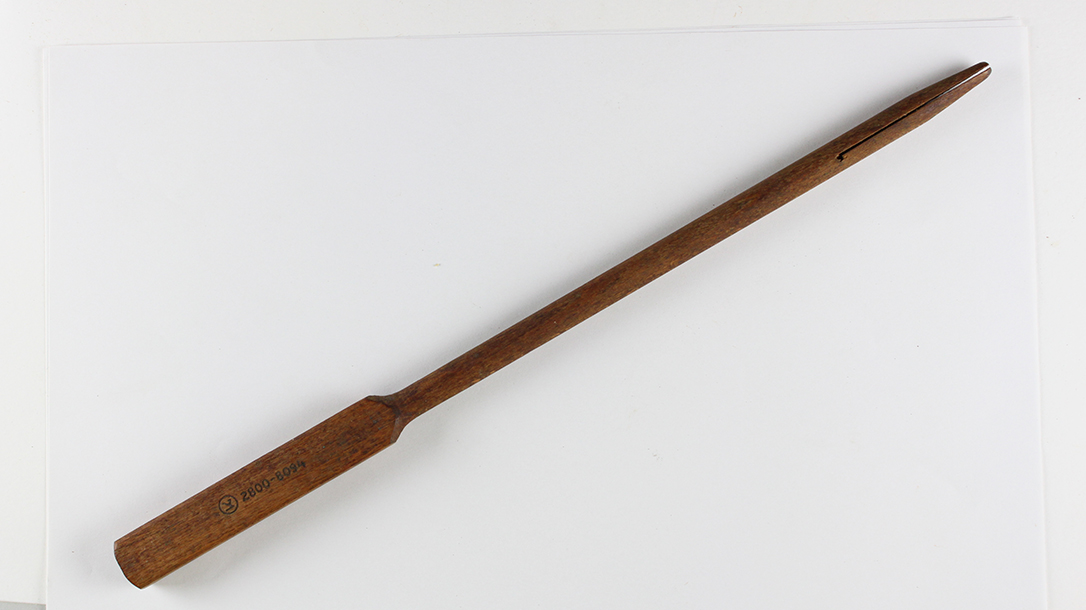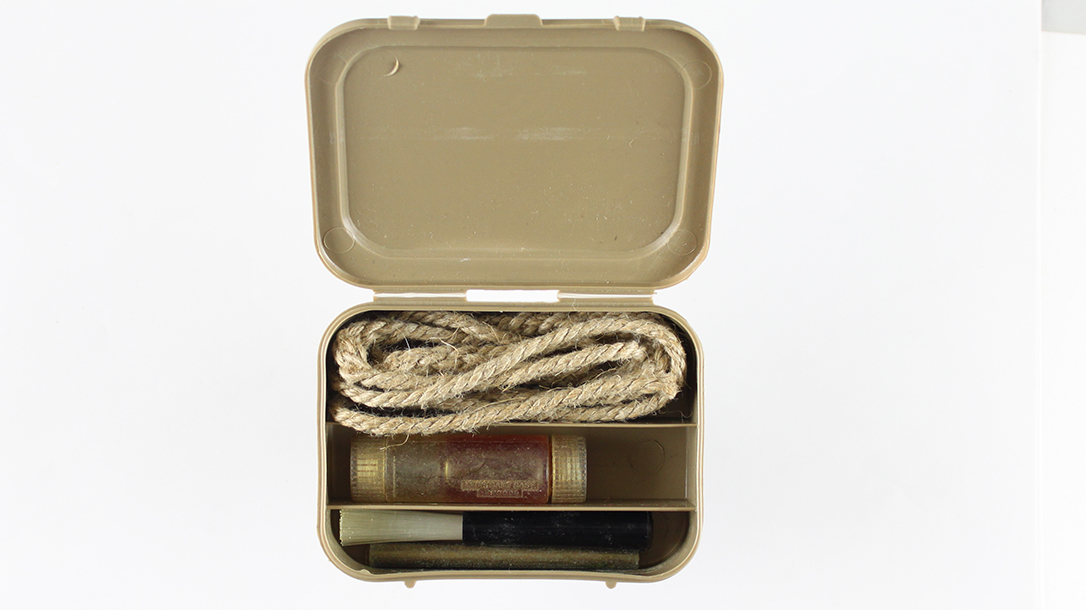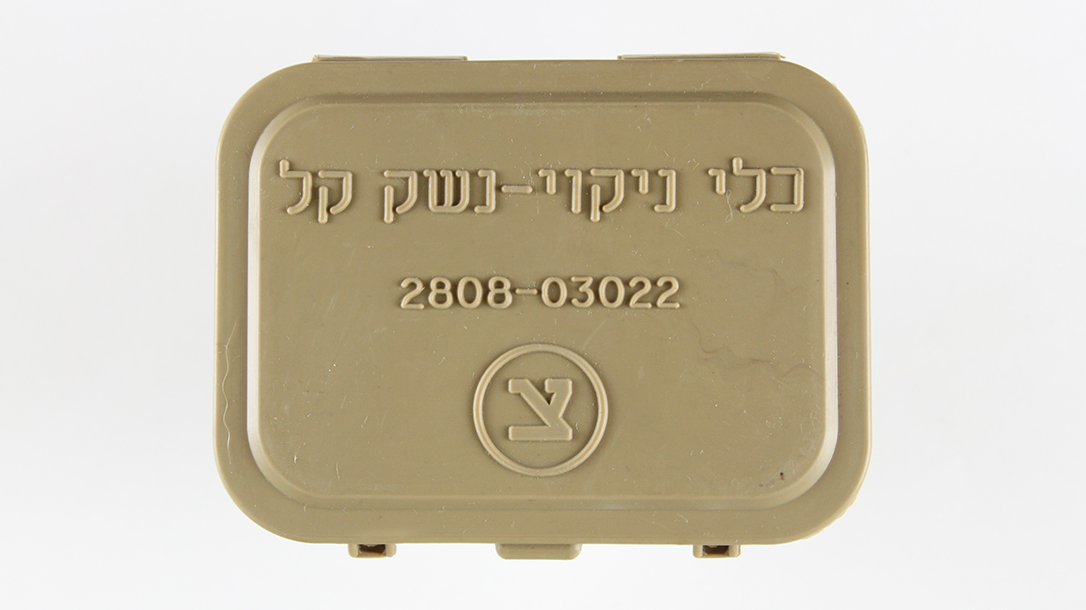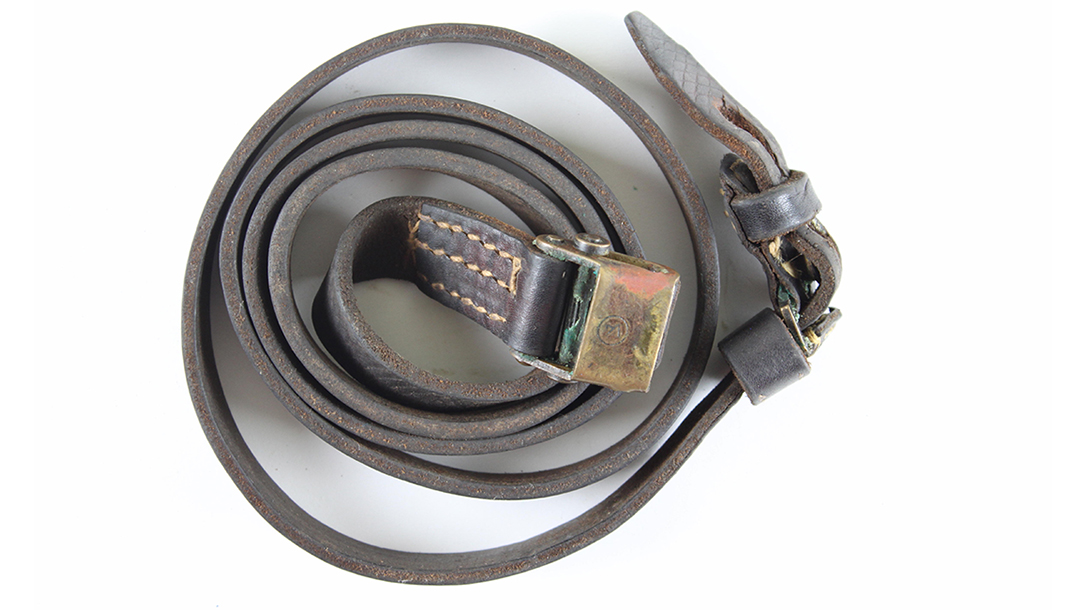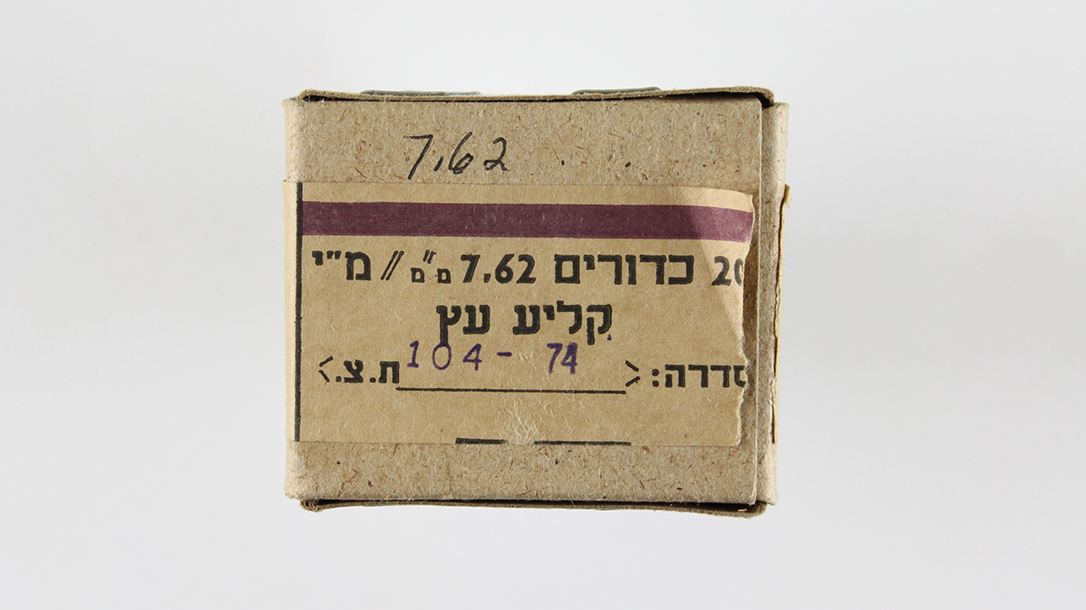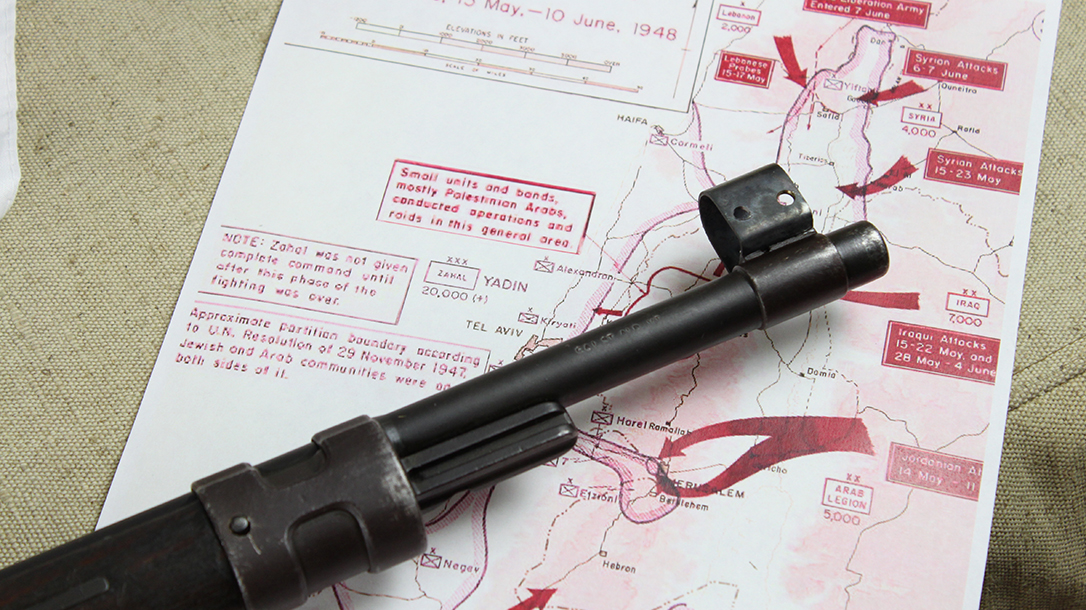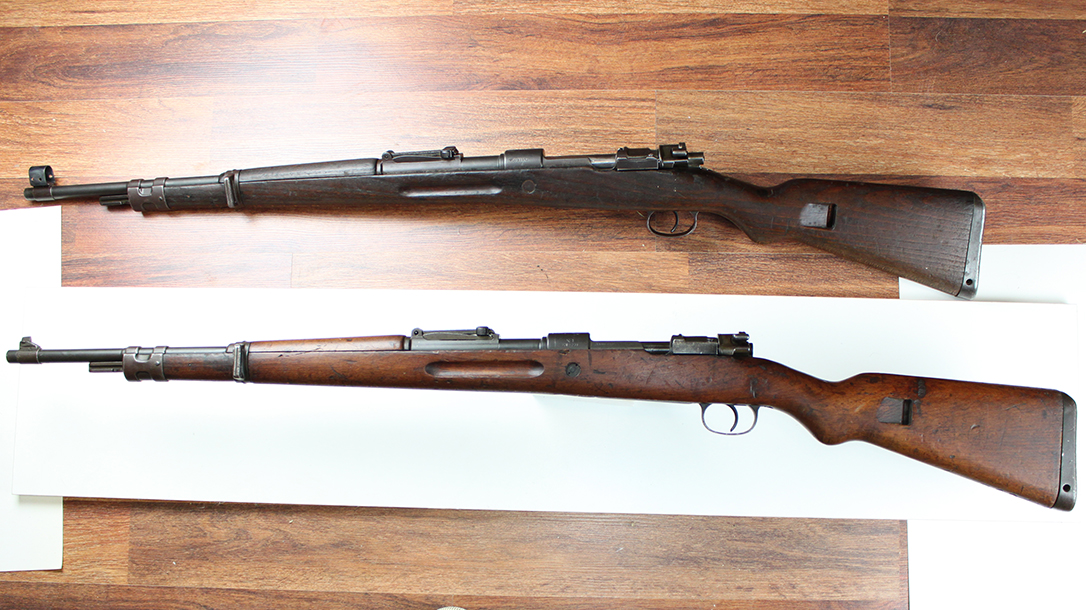One of history’s great ironies is that the fledgling state of Israel, predominantly made up of pre-war Zionists and Jewish displaced persons, or DPs, from Nazi concentration camps, won its independence largely with German K98 rifles. But how did the Israelis get so many wartime Mausers in the first place?
On the surface, the easy assumption is that the victorious Western Allies supplied the new Jewish state with these arms. But that’s not so. As German troops surrendered in the closing days of World War II, the Allies had no intention of stockpiling German arms for future use. And actually, the Americans tended to destroy captured weapons en masse. The British generally did the same or turned weapons back to police and border guard units. The French sent theirs to North Africa and Indochina for use in their post-war colonial conflicts. Thus, the Israeli K98 rifles didn’t come from Israel’s current allies. They came from behind the Iron Curtain.
Advertisement — Continue Reading Below
Toward Zion
The effort to create a Jewish state in Palestine began before the turn of the 20th century. Of course, there have always been Jews in the Middle East, but small groups of European Zionists began emigrating to Palestine and organizing into agricultural settlements under Ottoman rule long before World War 1. This didn’t sit well with the Arabs. Therefore, the Zionists formed local militias for self-defense. They used whatever weapons they brought with them or could buy on the black market. It was a motley assortment of weapons of the time, from Martinis; Gewehr 88s; Turkish Mausers; the French Gras; Remingtons and Russian Mosin-Nagants.
The British captured Jerusalem from the Ottoman Turks in 1917. They were given control of Palestine after World War 1 by the League of Nations. That was problematic, as the British had promised the Arabs that they would be granted some degree of independence or at least autonomy if they fought against Turkey during the war, while promising the Jews in 1917 in the Balfour Declaration, “His Majesty’s government view with favor the establishment in Palestine of a national home for the Jewish people, and will use their best endeavors to facilitate the achievement of this object, it being clearly understood that nothing shall be done which may prejudice the civil and religious rights of existing non-Jewish communities in Palestine, or the rights and political status enjoyed by Jews in any other country.”
Fighting between the Jews and Arabs only intensified as both sides begged, borrowed and stole small arms. It was all the British could do to keep control. Local Jewish militias were being called “Haganah” (or “Defense”) by about 1920. By 1933, the Zionists founded their own clandestine defense manufacturing group. The group is known today as the Israel Military Industries, or IMI.
Advertisement — Continue Reading Below
War Erupts Again
In 1936, the Arabs revolted in earnest, and the British decided to limit Jewish immigration to Palestine. At the same time, the Nazis were escalating their persecution in Europe. This forced Zionists to accelerate smuggling arms and people into the area. During World War II, many Jews in Palestine joined the British army to fight the Vichy French in Syria. This allowed for French Lebels and a fair number of British Enfields to be diverted to the Zionist underground.
Palestine was flooded with concentration camp survivors and DPs from Europe after WWII. Fearing another Arab uprising, the British again limited immigration and actually blockaded the country to keep Jews out by force. The Haganah and other Jewish groups mounted a guerilla campaign with the weapons they had, could make locally in clandestine workshops or could buy on the black market. Many were surrendered German wartime K98s, available across Europe and smuggled into Palestine under the noses of the British.
From 1947 through 1948, as the United Nations debated the future of Palestine, it became clear that the British would exit and a Jewish state would be created. It was not if but when, and the world’s critical players jockeyed for position. It was also clear the Jews would need more weapons to defend themselves from their Arab neighbors—a lot more.
Advertisement — Continue Reading Below
Stalin Comes Knocking
Small-arms assistance came, oddly enough, from Soviet dictator Joseph Stalin himself.
Given Israel’s strong ties to the West, it seems almost impossible to conceive that Stalin and the Communist Soviet Union helped the Israelis in those early days. But they did. In fact, about a half-million ethnic Jews served in the Red Army during WWII. From the early days, Zionists set themselves up in Palestine in communes, based loosely on the Soviet model. Perhaps more importantly, though, the United States and the West were waffling on their support for a Jewish state. But Stalin and the Soviets believed it was in their best interest to support the Jews in Palestine. They did in the hopes that a new country might become a communist base of influence in the Middle East.
And thus in about 1947, Stalin allowed the Jewish Agency to begin purchasing large amounts of arms and ammunition for the Haganah. But the arms would not be of Soviet design or manufacture and would not come directly from the USSR. Rather, they’d come from a Soviet-occupied satellite state. This was done so the Soviets could maintain a reasonable degree of deniability.
Advertisement — Continue Reading Below
Czech Cover
Czechoslovakia was the obvious choice. The country had a shaky democracy dominated by communists, many of whom ironically were Jewish by descent and pro-Zionist. The Czechs were sitting on stockpiles of German weapons surrendered in 1945. the country was largely unscathed during the war. Thus, it had many fully functioning arms factories that had operated under German supervision. In fact, to keep its workforce occupied, the new Czech government kept the factories running at the end of the war. They turned out German-designed weapons and equipment from excess wartime parts and stockpiling the end products. The trouble for the Czechs, though, was how to sell all that wartime and mounting post-war material.
There was no real market in the West, and the Soviets had captured plenty of their own from the Germans. But German arms, especially small arms, were thought of as superior to the Allies’ by many Third World countries. As such, there were small-market opportunities in Central and South America, and especially the Middle East. So Omnipol, a pre-WWII Czech export company in Prague, was resurrected to handle the transactions. Because German arms were thought of so highly abroad, when the WWII components were used up, the Czechs simply manufactured them anew, complete with wartime German ordnance codes and markings.
Operation Balak
Supplying the Haganah was a win-win for the cash-starved Czechs as well as the Soviets and the Jews. Golda Meir and others set about the globe raising currency (particularly in the United States) the Czechs desperately needed. This also let them move some of their inventory while keeping workers on the assembly lines. Stalin could advance his agenda in the region. He encouraged and authorized the transfer of German arms to Palestinian Jews (who were fighting a guerilla campaign against one of his rivals, the British) while maintaining the illusion that the USSR had nothing to do with the matter. And of course, the Haganah, as end-user, got the weapons it desperately needed.
Advertisement — Continue Reading Below
The deal was called Operation Balak. It involved several purchases of arms. The purchases were handled by Omnipol via a shadowy government holding company called Secretariat D. The first iteration, in 1947, involved the sale and transfer MG34 machine guns, 4,500 rifles (presumably K98s) and more than 50 million rounds of ammunition. Most of the arms came from the old Ceskoslovenska Zbrojovka, which, since the end of the war, had been reorganized with other facilities into the “people’s enterprise” Zbrojovka Brno, or ZB. The arms and ammunition were then smuggled into Palestine.
Preparing for the inevitable, David Ben-Gurion, head of the World Zionist Organization and president of the Jewish Agency for Palestine, made conscription universal. Every Jewish man and woman in Palestine was required to undergo military training.
Unfortunately, by May 15, 1948, the Haganah and other groups had only accumulated about 10,000 rifles of all types in Palestine. That would not be nearly enough, of course, because as the British abandoned the area and sailed away, Ben-Gurion declared the Jewish state of Israel independent. Within hours, Lebanon, Jordan, Iraq, Syria and Egypt attacked.
Advertisement — Continue Reading Below
Israeli Defense Forces
The Haganah quickly became what we now know as the Israeli Defense Forces, as the war waxed and waned from May 15, 1948, to March 10, 1949. The situation was so desperate that thousands of recent immigrants with little or no military training were given rifles as soon as they arrived and sent directly to the front. Shipments of arms from Czechoslovakia arrived almost daily at Israeli ports and airfields. From 1947 through 1949, aircraft, machine guns and automatic rifles were supplied, along with about 35,000 K98s, 10,000 bayonets and more than 90 million 7.92x57mm cartridges.
Stalin’s support for Israel withered in the aftermath of the Stalin-Tito split. Afterward, all of the countries under the Soviet sphere of influence were forced to tow the line, especially on matters of foreign policy. Stalin became increasingly paranoid, and in another of his infamous purges, forced all of the Jews out of government positions. Meanwhile, it became apparent that the Israelis believed their future hinged on the relationship and financial backing of the West and the United States, and that marked the end of arms shipments from Czechoslovakia to Israel.
Advertisement — Continue Reading Below
K98 Identities
Israeli K98s come in many forms with myriad markings, making classification difficult. Generally, though, there are four main groups:
The first and most common group is the 7.92x57mm WWII German-manufactured rifles (pre-WWII Czech, Ethiopian, Mexican and WWI German G98 receiver markings have also been observed). These were obtained clandestinely before Israeli independence or surrendered in Czech territory at the end of the war, purchased by the Jewish Agency and sent to Israel via Operation Balak. They bear wartime German ordnance codes, markings and standard features. The Czechs reworked some rifles before they were shipped but also shipped others as they were.
The second group consists of 7.92x57mm rifles produced after the war in Zbrojovka Brno, which bear post-WWII Czech markings and firing proofs. Most, but not all, have the top of the receiver scrubbed of the typical Czech lion property mark and are in what collectors call the “semi-Kriegsmodell” configuration, with late-war-type stocks and hardware. Many were also fitted with the large, oversized stamped triggerguard. These were actually designed by Mauser in World War II but not mass-produced or issued in any number during the war.
Advertisement — Continue Reading Below
After Israel’s independence, in about 1951, the Israeli Defense Forces supplemented its stocks by purchasing Model 1930 rifles made by Fabrique Nationale in Belgium. This constitutes the third major group of rifles. The FN/Israeli Model 1930 differs little from the standard K98, except for finger grooves in the solid stock, the shorter Model 1930 band spring, the left receiver marking “FAB. NAT.D’ARMES de GUERRE HERSTAL-BELGIQUE” and the Israeli Defense Forces crest on top of the receiver.
Fourth K98
At about the same time, the Israelis purchased an assembly line to produce their own version of the K98 from Switzerland for $2 million. Delays in delivery, however, prevented the large-scale production of complete K98s. Then, with so many worthy self-loading designs on the market, the Israeli Defense Forces began testing several more modern designs and decided instead to adopt the Belgian FN FAL chambered in 7.62mm NATO as its main battle rifle.
The K98 facility was then left to produce spare parts and overhaul all of the various existing K98s in the country. To standardize ammunition supply, the rifles in the first three groups were reworked and re-barreled to use the 7.62mm NATO cartridge. Those guns comprise the fourth group. They have finger-grooved beechwood stocks, new barrels, a large “7.62” hammered into the receiver top and an equally large “7.62” branded into the butt of the stock. Rework and acceptance/proof marks consisted of a Star of David and the Hebrew tsade letter in a circle, usually on the left side of the receiver. In addition, the reworked rifles were fitted with a front sight hood, peculiar to Israel, with two holes and a rivet to secure it in place.
The country still had a lot of 7.92x57mm ammunition in storage by the 1956 Suez Crisis. Only a portion of the country’s K98s had been overhauled and re-barreled for the 7.62mm NATO. Also, only a few FN FALs were available at that point. So, the venerable K98 went to war again, in both calibers. By the time of the 1967 Six Day War, most of Israel’s K98s had been overhauled, and the 7.62mm NATO version was still in service during the 1973 Yom Kippur War. Many were made into sniper rifles, commonly using Nimrod or Kahles telescopic sights.
Service Life
During the K98’s decades of service, the Israelis manufactured several accessories for the gun. Those included thick leather K98 slings based on the WWII German version but stamped with Hebrew markings and using brass fittings.
Bayonets were also refurbished or produced, incorporating Czech and wartime German features, and most appear to have been marked in Hebrew and dated. In addition, those Israeli bayonets used simpler phenolic grips and were not as well finished as their wartime counterparts.
Spigot-type grenade launchers based loosely on the American and/or Yugoslavian pattern were also produced and have been available on the commercial market recently, as have plastic cased cleaning kits with wooden cleaning rods.
After Israel was fully equipped with FN FALs and, later, American M16 rifles and the IMI Galil, the old K98s were largely given to other countries as aid or put out as surplus. Most Israeli Mausers in the United States were imported from 1980 through 1990 by Armscorp and Century Arms and were sold as “Golan Heights” rifles, a clever but not historically accurate bit of marketing.
Finally, I would like to thank David W. Davis, Steven A. Marcus and Collector’s Firearms in Houston, Texas, for help with this article.
